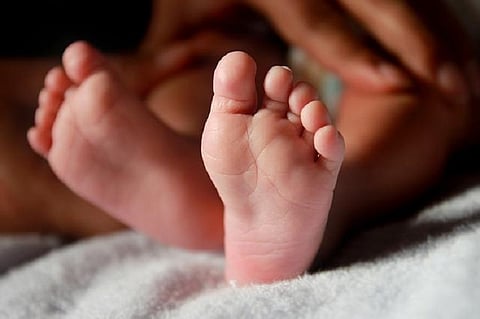

As many as 54 infants died in the last five years in three panchayats of Palakkad district’s Attappady a region where tribal population is high. The statistics were released in a study by Kerala Mahila Samakhya Society (MSS). The study analysed the infant deaths between March 2013 and August 2018 and was carried out in three panchayats - Agaly, Pudur and Sholayur of the Attappady block.
According to the study, which included 48 mothers, malnutrition of mothers, non-accessibility to hospitals and lack of timely health care, among others, contributed to infant deaths in Attappady. Most of the infants are the first child of the family, it observed. MSS presented the report on Monday during a consultation on infant deaths in Attappady, in the presence of State Planning Board member Dr B Ekabl.
“Some women are still not aware of the symptoms of pregnancy. Most of them are anaemic and have an irregular period. In fact, some don’t care if they do not get their period,” Vally R, a field worker of MSS tells TNM.
“Accredited Social Health Activists (ASHA) workers and Anganwadi teachers visited homes and sensitised them on the importance of the early identification of pregnancy. Yet, some have failed to identify pregnancy in a timely manner. As a result, there is a lack of care, including following a balanced diet, in the initial days,” she says.
Also, pregnant women don’t have access to nutritional food due to the low income of the husband. “The men of their families, where we conducted the study, were mostly at home, unemployed. Even if they are working, they mostly engage in small-scale farming and survive with the meagre income they earn from this. They cannot afford to maintain a balanced diet. The families depend on the rice from ration shops and consume vegetables also, but it is not sufficient for a pregnant woman,” says Ramy, another staff of MSS.
The lack of health facilities also makes the situation vulnerable. “There are three hospitals in Attappady, which are far from some tribal hamlets. Out of the three hospitals, only one is equipped with multi-speciality facilities; that too, not up to the mark. Due to financial constraints, women are hesitant to travel for routine examinations to these hospitals. Also, even though they would be advised to get admitted in the eighth month of pregnancy, they would come only if they are in active labour. If they develop any complication, they would be shifted to a hospital with better facilities. But in this case, as well, it would be too late by the time they reach the hospital,” Ramy says, pointing out another cause of the infant deaths.
“The mothers don't follow traditional food habits. 31.25 per cent of them consume ragi, 68.75 per cent follow non-traditional food habits of the tribal people, 68.75 per cent have milk twice a week, 39.58 per cent rarely consume fruits, 87 per cent rarely have eggs and 29.16 per cent rarely consume fish,” the study report says.
The women are not well educated, too. Among the 48 mothers, who were interviewed for the study, only one was a post-graduate, two were degree holders, one had passed a Teachers Training course, and others did their secondary and higher secondary schooling.
“6.25 per cent of the women get pregnant between the age group of 14 and 17; 79.16 per cent between 18 and 25; 14.58 per cent at the age of 26 and above. Three mothers self-diagnosed their pregnancy; 45 among them identified pregnancy in their first trimester while three of them identified their pregnancy in the second trimester,” the report cites.
Another grave reality is 22.91 per cent of the women got married below the age of 18 while 27.08 per cent among them married between the age group of 18 and 25. The early marriage is related to customs.
But at the same time, a noteworthy feature of the wedding of the tribal women is that 54.16 per cent among them selected their own husbands, 14.58 per cent married relatives and 31.25 married a man of parents’ choice. The sex ratio of the tribal people is is 1021, almost close to that of the state, which is 1084. It is to be noted that the work participation rate of tribal females is 35.4 per cent while that of the state is much lower - 18.23 per cent.